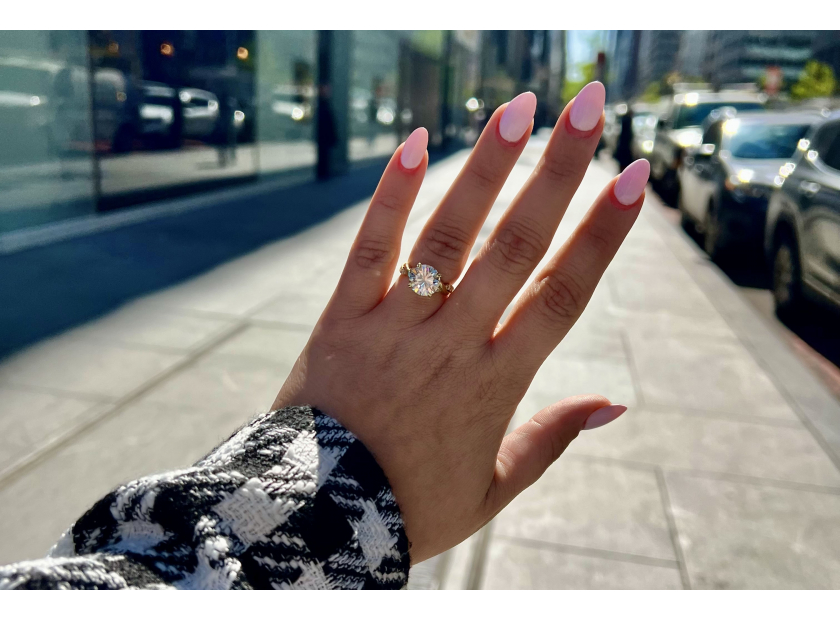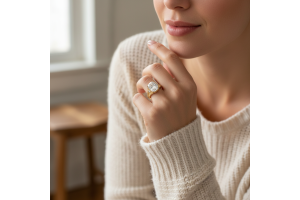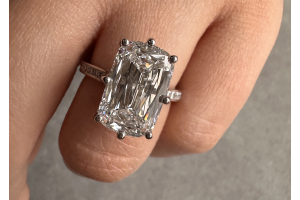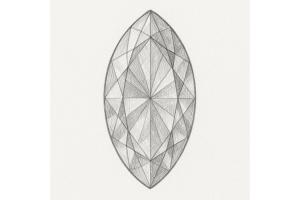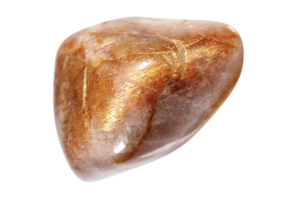GBP
/
GBP
/
Shipping to:
Currency:
Choosing the Perfect Engagement Ring for Your Hand and Finger
Your engagement ring is more than just a symbol of your commitment; it's an expression of your unique style and personality. One of the key considerations when selecting the perfect ring is how it complements your hand and finger shape. This guide will help you understand the impact of ring design on different hand and finger types, ensuring that your choice enhances your natural beauty.
Understanding Your Finger Shape
Each finger shape has its own charm, and understanding yours can guide you in choosing a ring that enhances its best features. Whether you have long, slender fingers, short fingers, or a wide knuckle, the ring style you choose can highlight the aspects you love most about your hands.
Long Fingers
If you have long fingers, you are fortunate in that most ring styles will suit you. However, you may want to consider rings with a wider band or larger stones, as these can help balance the length of your fingers, creating a harmonious look.
Short Fingers
For shorter fingers, the goal is to create the illusion of length. Opt for elongated shapes like oval, marquise, or pear-cut diamonds, which can visually lengthen the finger. Additionally, a slender band can help make the finger appear longer and more graceful.
Wide Knuckles
Rings that have a thicker band or feature larger settings can be ideal for those with wider knuckles, as they draw attention to the ring itself rather than the width of the knuckle. A ring with an intricate design or multiple stones can also distract from the knuckle size, offering a balanced and beautiful appearance.
Narrow Fingers
With narrow fingers, you’ll want to avoid designs that overwhelm. Opt for smaller stones and delicate bands to maintain proportionality. Simple settings like solitaire or pave can enhance the elegance of your fingers without overshadowing them.
Hand Size and Ring Design
Just as finger shape is important, so too is the size of your hand. Petite hands may benefit from more delicate designs, while larger hands can carry off bolder, more substantial rings.
Petite Hands
If your hands are small, you may want to consider rings that are daintier and less ornate, as overly large designs can look overwhelming. Smaller diamonds or a cluster of smaller stones can provide the right balance, enhancing the beauty of your hand without overpowering it.
Larger Hands
Those with larger hands have the freedom to explore bolder designs. Rings with thicker bands, larger stones, or more intricate detailing can complement the size of your hands, ensuring that the ring stands out and makes a statement.
Skin Tone and Metal Choice
Your skin tone can also influence the best choice of metal for your engagement ring. While traditional choices like yellow gold, white gold, and platinum are always popular, considering your skin tone can help you select a metal that enhances your natural beauty.
Cool Skin Tones
If you have a cool skin tone, characterised by blue or purple undertones, metals like platinum and white gold can complement your complexion beautifully. These metals have a sleek, modern appearance that enhances the cool tones in your skin.
Warm Skin Tones
For those with warm skin tones, characterised by yellow or gold undertones, yellow gold and rose gold are excellent choices. These metals enhance the warmth in your skin, providing a glowing, radiant look.
Neutral Skin Tones
Neutral skin tones, which have a balance of both cool and warm undertones, are versatile and can wear both cool and warm metals. This flexibility allows you to choose a ring in your preferred metal, knowing that it will complement your skin beautifully.
FAQ - Engagement Ring Hand & Finger Guide
How do I choose the right ring if I have short fingers?
Choosing a ring with an elongated diamond shape like oval or marquise can create the illusion of longer fingers. A slender band can also help make your fingers appear more graceful.
What ring styles are best for wide knuckles?
Rings with thicker bands or larger settings are ideal for wide knuckles. These designs draw attention to the ring itself rather than the width of your knuckles, offering a balanced appearance.
Which metal should I choose for a cool skin tone?
If you have a cool skin tone, consider choosing metals like platinum or white gold. These metals complement the blue or purple undertones in your skin, enhancing your natural beauty.
Can I wear any ring style with long fingers?
Yes, long fingers are versatile and can wear most ring styles. However, wider bands or larger stones can provide balance and enhance the overall look.
Is there a specific ring style for petite hands?
For petite hands, daintier designs with smaller stones or clusters of smaller stones can provide the right balance. This ensures the ring enhances your hand’s beauty without overwhelming it.



